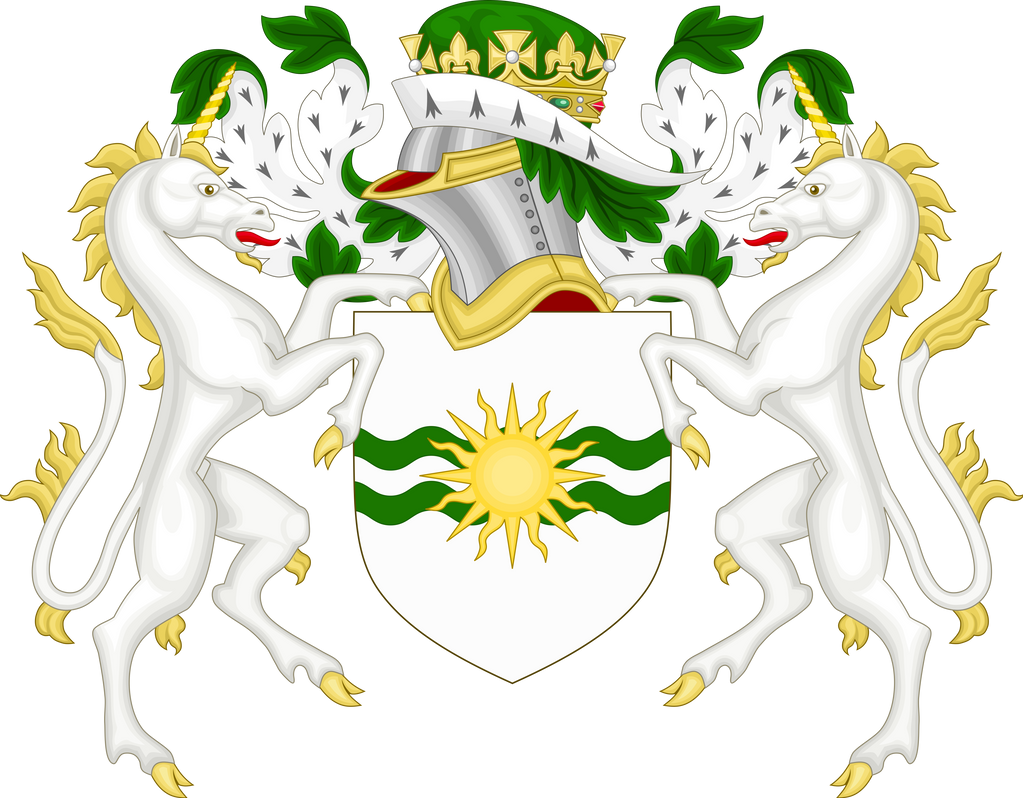HOME | DD
 aldohyeah — Attributed Arms - Sunda
aldohyeah — Attributed Arms - Sunda

#sunda #attributedarms #coatofarms #heraldry
Published: 2017-11-05 11:44:08 +0000 UTC; Views: 1564; Favourites: 17; Downloads: 0
Redirect to original
Description
The Attributed Arms series continues, now reaching it's 5th episode. Same disclaimer though, and you should really check out the artwork in there because it gives you a little glimpse of classical Indonesian history.The Kingdom of Sunda is mentioned several times in the previous installments in this series. It's the "proper" heir of the Kingdom of Tarumanagara after its abolition in 669 AD, because the King of Sunda, Tohaan Tarusbawa, was the son-in-law of the last king of Tarumanagara. After the Srivijayans from Sumatra successfully raided Sundapura, and Wretikandayun of Galuh gained enough support to secede as a separate kingdom, the Tohaan moved to a newfound city named Pajajaran (today known as Bogor) to be crowned as the new king. He wanted to restore the golden age of Sundapura that his ancestors had built, so he named his new realm Sunda, taken from the Sanskrit word शुद्ध (shuddha) meaning 'pure' or 'bright'.
Unlike Galuh, which was coloured (or tainted?) by scandal, usurpation, and revenge, not much is known about the events regarding the government of Sunda Kingdom. Since its foundation until 723 AD, Sunda had only one king; the Tohaan himself (while Galuh had five). The Tohaan had one (known) son, called Rakeyan Sambawa, whom he sadly outlived. So, the Tohaan named Sambawa's daughter, Tejakancana, as the heiress apparent of Sunda.
The Tohaan also maintained friendship with Bratasenawa, the third king of Galuh, who was unpopular due to his unfavourable origins. When Bratasenawa faced rebellion by his half-brother, the Tohaan came to his aid, though to no avail, since Bratasenawa was forced to leave Galuh for Kalingga . When Bratasenawa's son, Sanjaya, sought revenge to the usurper, the Tohaan pledged assistance to him. And when Sanjaya emerged victorious, he arranged a marriage between him and her granddaughter, Tejakancana, causing the union of the crowns of Sunda and Galuh. The couple ascended to the throne as co-rulers of the new United Kingdom of Sunda and Galuh in 723.
The attributed arms is argent, two barrulets wavy vert, and a sun in the middle Or. Argent was chosen to represent the purity that is the meaning of Sunda. The two wavy lines alludes to name Pajajaran, the capital of Sunda, which was so named because it was located between two paralleling (Sundanese: jajar) rivers, Cisadane and Ciliwung.
---
Elements are taken from Wikimedia commons, user Sodacan

























